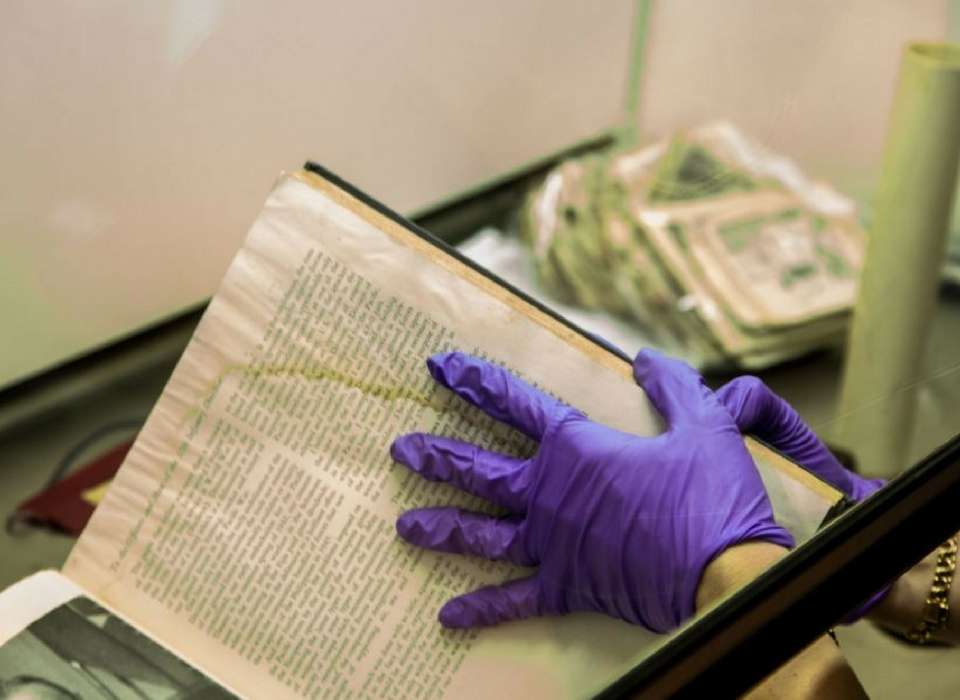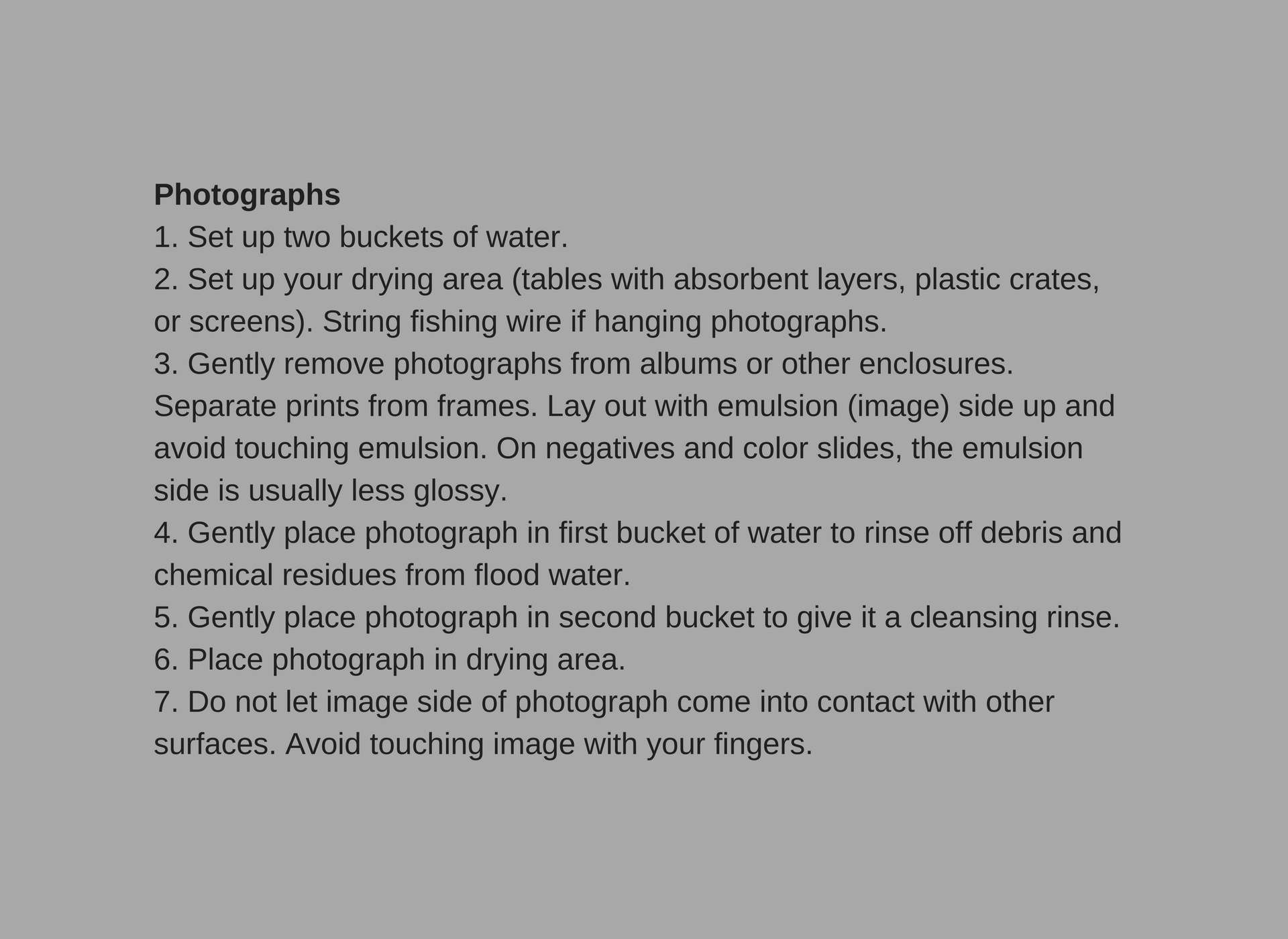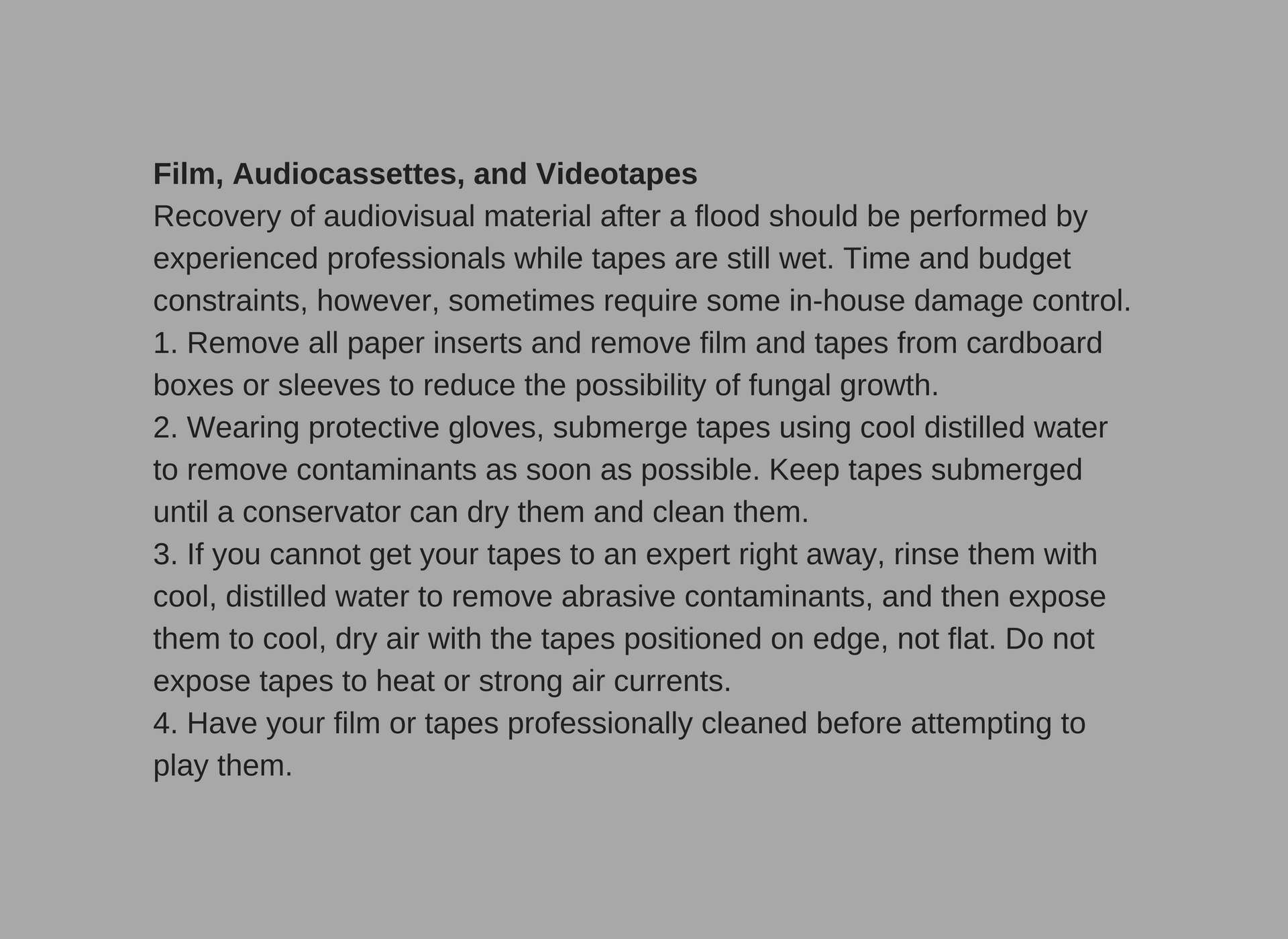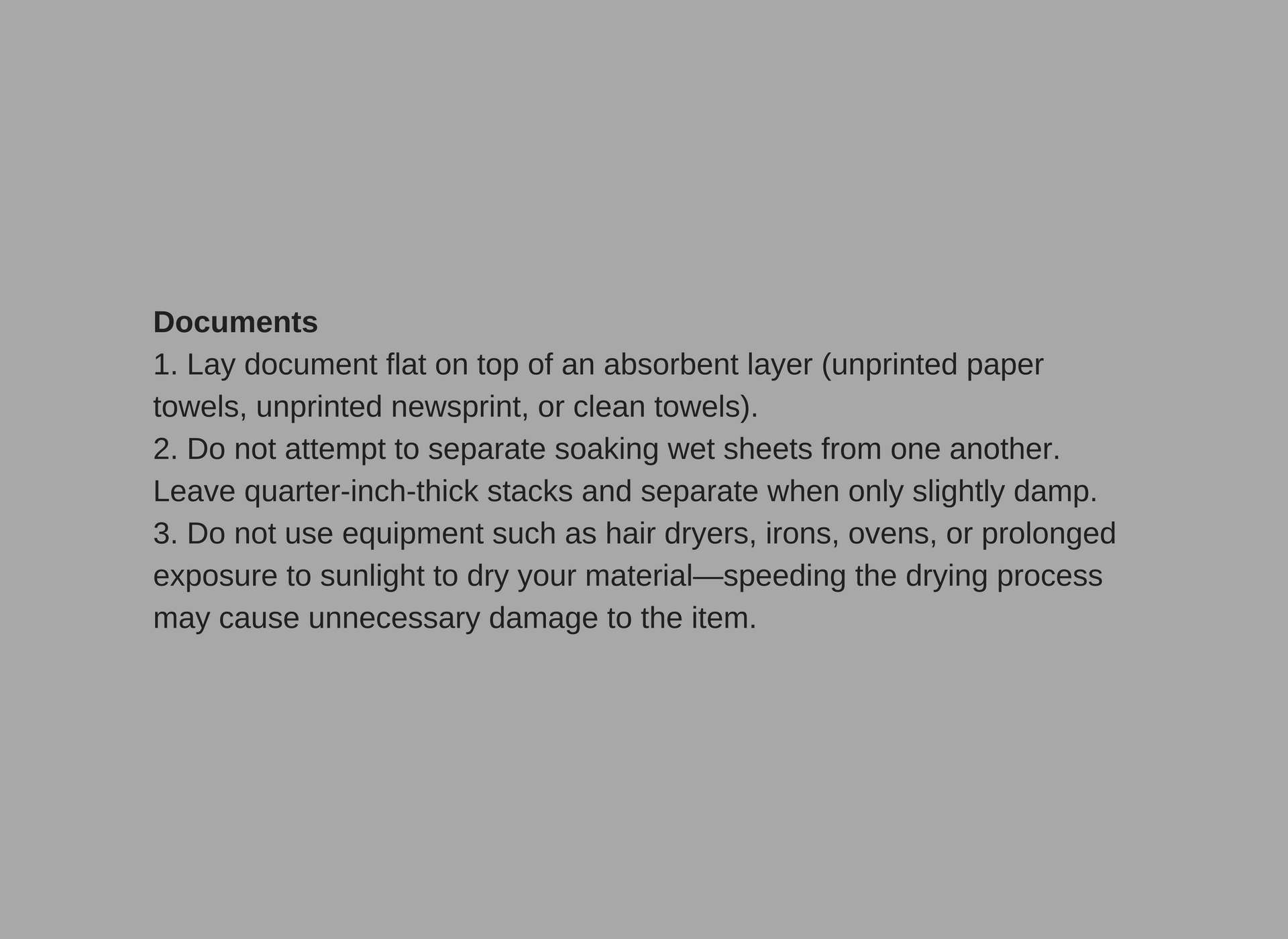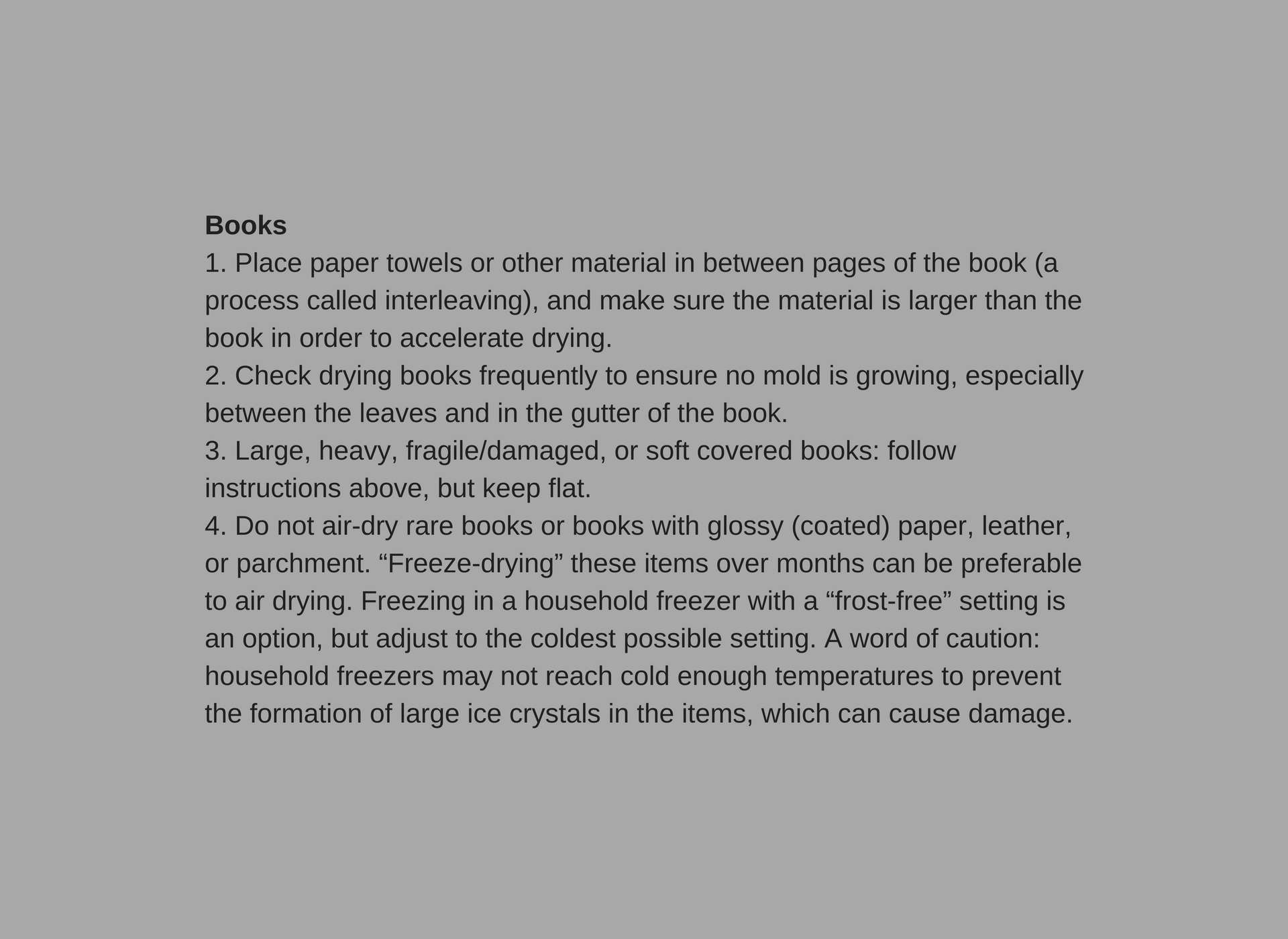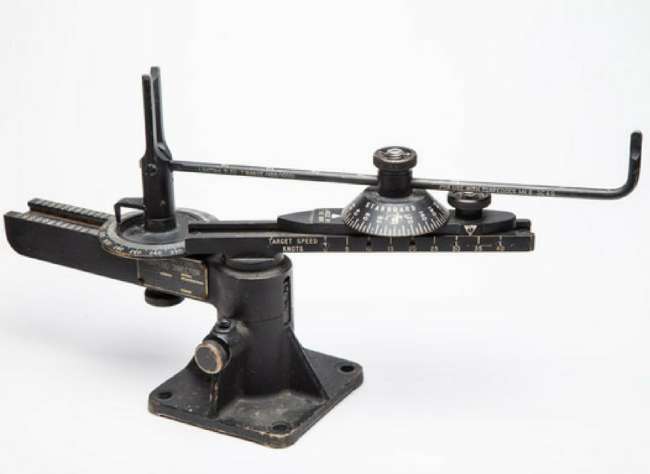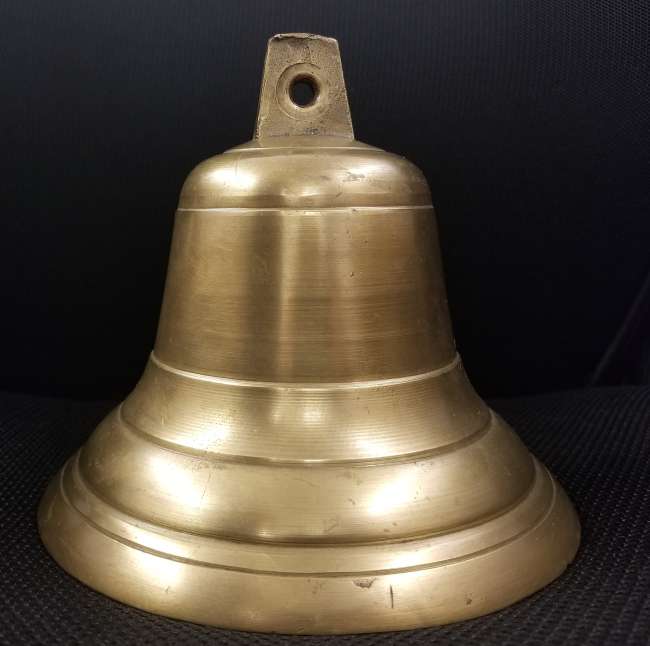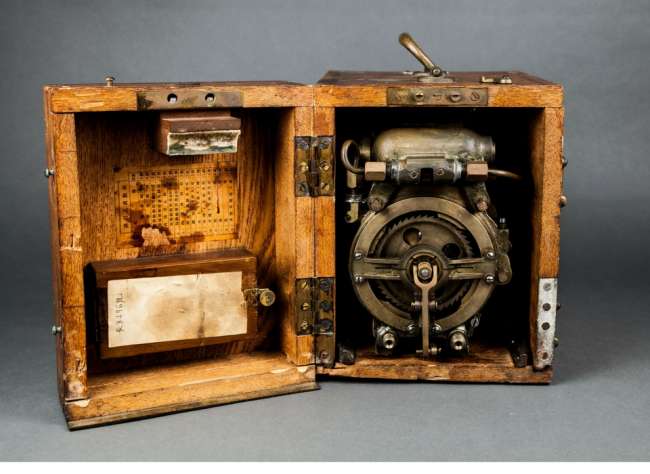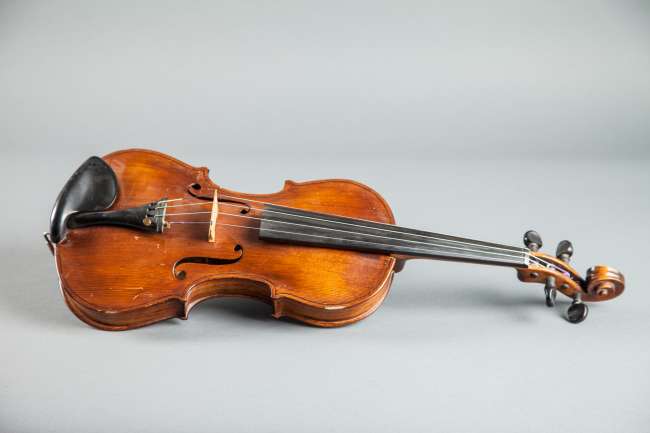During hurricane season, it’s wise to take precautions to protect what’s important to you and your family. We in the Gulf South know the importance of safeguarding not only property but cherished family keepsakes, photographs, and other personal mementos in the face of a storm.
At The National WWII Museum, we take preventive measures to protect and preserve our collection of irreplaceable artifacts, especially with regard to disaster preparedness. We are happy to share resources with you that can help you prepare for or provide some direction in the face of an emergency such as a flood, hurricane, or other tropical weather event. Take a few minutes to review the tips and steps below.
Pre-storm preparedness:
Planning ahead is vital to preventing damage to your family and personal collections from occurring during a storm. Preplanning is also important to the recovery of your collections in the event that damage cannot be avoided.
1. Store material in a part of your house away from windows, outer walls, areas prone to leaks, and other water sources such as faucets and pipes.
2. Place the material at least one foot off the ground (maybe more, depending on your area’s flood risk).
3. For the short term, such as during a storm threat or for the busiest months of storm season, choose an enclosure that provides structural support, protects from dust, light, and water. This could be a plastic tub or any container with a good seal. Do not keep the material in this type of container over the long term.
4. Prepare a response kit in the event your material gets wet. Much of this is available at your local hardware or builders supply store:
- Safety: plastic apron and gloves, dust mask, plastic boots
- Cleaning: paper towels (without printing), sponges, brushes, mop, bucket, plastic totes, fishing line or other string, heavy-duty trash bag
- Note-taking: clipboard, pad of paper, pencils, adhesive labels, waterproof flashlight and headlamp, extra batteries, camera
- Packing: polyethylene sheeting, duct or masking tape, wax paper, plastic crates
- Other equipment: fans, dehumidifiers, folding tables
Post-storm recovery:
In the event that you must respond to the aftermath of a storm, it is important to remember that personal safety comes first. When you are confident it is safe to enter an affected area, you can then assess the situation and follow some general guidance for beginning the salvage process.
- Set up a work space, indoors if possible, where you can keep temperature cool and the humidity low. Use fans, air conditioners, dehumidifiers, or open windows to increase airflow. Even if conditions do not allow for low humidity and cool temperatures, increasing air circulation will aid in maintaining a better environment by encouraging your material to dry and reducing chances of mold growth.
- Handle all important wet material with care. Wet material is fragile; gentle handling will reduce the chances of excess damage during the salvage process.
- Prioritize. You may not have the chance to salvage everything, so focus on what is important to you and your family, considering historical, sentimental, and financial value.
- Because floodwater is likely to contain abrasive contaminants, be sure to wear your personal protective equipment (mask, gloves, boots, and long sleeves). When handling material affected by floodwaters, it is also especially important to blot dry rather than scrub the surface of any item you are cleaning.
Click through this quick guide to salvaging specific types of personal items, such as books, photographs, documents, film, audiotapes, and videotapes:
For more information:
FEMA and the Smithsonian Institution cosponsor the Heritage Emergency National Task Force (HENTF, hentf@si.edu), a partnership of 42 national service organizations and federal agencies created to protect cultural heritage from the damaging effects of natural disasters and other emergencies. The HENTF website provides guidance and several step-by-step tip sheets on salvaging your family’s personal collections once the safety of you and your family has been secured. For further reading about salvaging specific items (photographs, books, textiles, furniture, paintings) visit the Library of Congress Response & Recovery page that focuses on response to water emergencies.
Finally, for immediate, free advice from a professional in the cultural-heritage field, you can call the Foundation of the American Institute for Conservation’s emergency response team, the National Heritage Responders. Heritage Responders offers a 24/7 emergency hotline to assist the public in recovery of personal affects after disasters: 202-661-8068.
Article by Archives Manager Jennifer Waxman.
